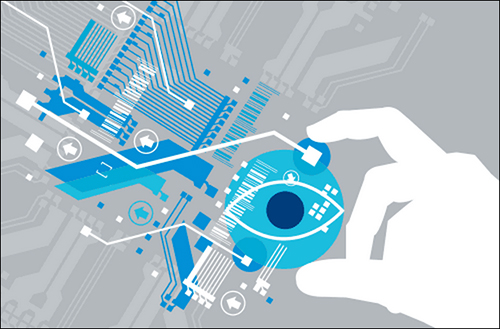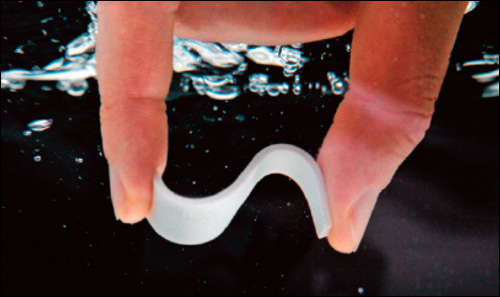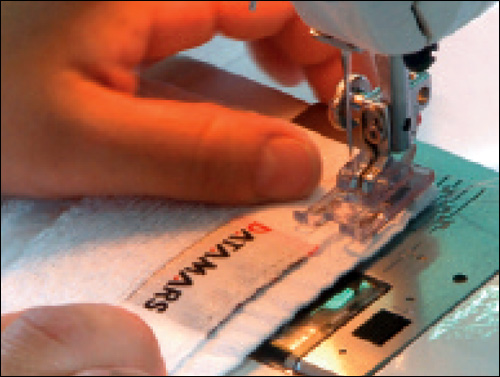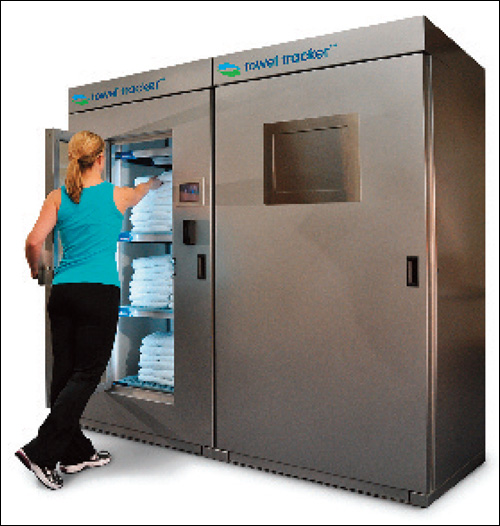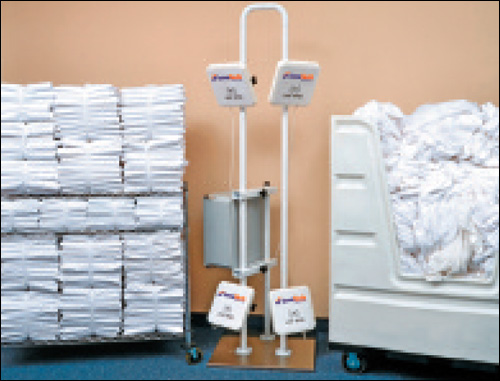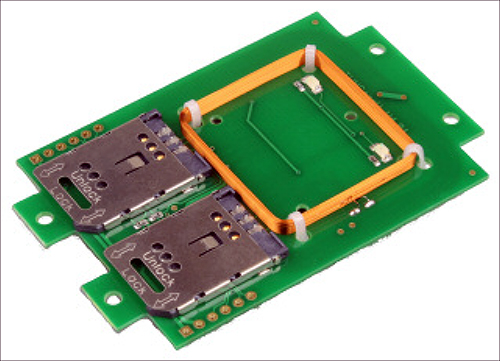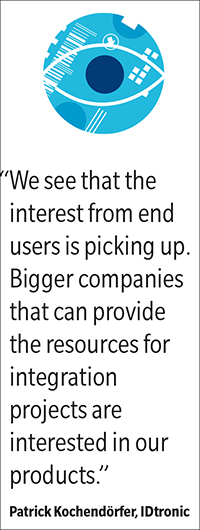Aug 25, 2015Disney is using self-serve checkout kiosks to track and manage its large inventory of costumes, worth roughly $100 million, worn by characters at its theme parks and on cruise ships. The RFID solution, developed in-house, has saved the company more than $1 million, increasing inventory accuracy and reducing labor.
Interstate Batteries deployed smart storage and display racks to track and manage batteries at 2,000 dealerships in five U.S. markets. Interstate, which partnered with RFID provider Seeonic to develop the smart devices, says the solution eliminates the need to send personnel to dealerships to count battery stock, a process that was time-consuming and error-prone.
The University of California San Francisco Medical Center installed a refrigerated vending machine, Pantry, to dispense fresh food automatically. San-Francisco-based startup PantryLabs developed the RFID solution, which gives hospital personnel and visitors better dining options when the café closes at night.
What these three very different businesses have in common is that each RFID solution for tracking and managing tagged items, whether costumes, batteries or food, depends on a small RFID reader embedded in the kiosks, racks or vending machines. The companies are using ultrahigh-frequency embedded readers from ThingMagic, a division of Trimble.
Elatec RFID Systems and IDtronic are two other leading providers of embedded readers, also referred to as modules. Elatec offers low-frequency, high-frequency and Near-Field Communication embedded readers. IDtronic makes UHF embedded RFID readers, as well LF and HF versions.
In addition to the solutions mentioned above, embedded RFID readers are enabling a variety of new applications, including: forklifts that can locate shipments in warehouses; "magic mirrors" in retail dressing rooms, which can improve customer service and boost sales; smart medical cabinets in hospitals, for managing inventory and replenishing items on demand; and photo booths at events, to engage attendees and market products. But developing a solution that incorporates these devices is not as straightforward as purchasing a fixed or handheld reader. Here's what you need to know to create a next-generation solution for your business.
Anatomy of an Embedded RFID Reader
RFID reader modules are small. The Nano, for example, part of ThingMagic's Mercury6e family of embedded readers, is the size of a postage stamp. But the modules are designed to provide the performance of full-size readers. They transmit and receive radio signals that carry information, such as the identification number of a product equipped with an RFID tag. They use low power consumption, which makes them suitable for mobile applications. Many feature read-write capabilities for label printing and applications with handheld and mobile devices. Zebra Technologies, for example, is using embedded readers from ThingMagic for its R170Xi RFID bar-code printer-encoder. The modules also have one or more connectors to support external antennas.
RFID providers that supply these products note the modules must be combined with other components in order to be of practical use. "The module is the heart of the RFID reader system," says Debbie Power, sales manager at ThingMagic. "For a complete working system, you need to include a small processor to tell the module what to do, what settings to use for operation and how to handle the data. You also need to provide a power supply, an antenna, and some type of enclosure" to house all the components.
"Some of our customers already produce electronic devices that have power, CPU and an enclosure," Power says. "They want to add RFID reading or writing capability to that device. Adding a finished UHF RFID reader introduces redundant components in a large form factor, whereas a UHF RFID module can often be embedded into an existing device with no change in form factor."
For the most part, embedded readers are designed for original equipment manufacturers (OEMs) that integrate the modules in products, such as industrial machines, point-of-sale terminals, and library-management, rental and ticketing systems. Some end users work with systems integrators to develop specific applications that use embedded readers.
Zebra is making ThingMagic's embedded RFID readers part of Zebra's Zatar cloud-based platform, designed for connecting printers, beacons and other devices to the Internet so they can be managed remotely. Integrating RFID into the Zatar platform enables the connected devices to share data with any application, according to Zebra. An automobile company, for example, could equip its manufacturing tools with embedded readers and use the Zatar platform to receive real-time information from its production floors to ensure the tools are operating within compliance parameters.
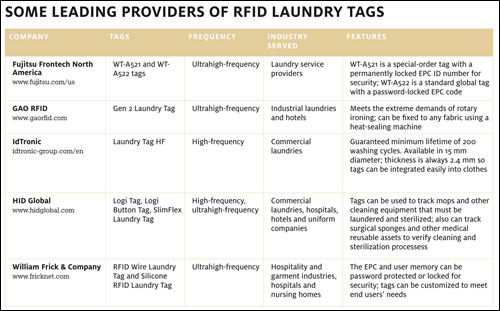
ThingMagic also supplies its embedded readers to companies that make smart cabinets and display systems. Keonn Technologies, for example, uses ThingMagic embedded readers in its AdvanLook interactive displays, which can be used in retail stores to help customers get information about a variety of in-store products. Munich Sports, a Spanish footwear company that installed the system at a children's shoe store in 2014, reports that it's popular with customers, makes employees more productive and boosts the store's image for innovation.
IDtronic integrates its embedded readers in the company's handheld computers and terminals, and in its stationary Bluebox Industrial RFID readers, designed for industrial automation or logistics applications, says Patrick Kochendörfer, a project manager at the firm. "We also have partners and customers using the embedded RFID modules to build their own RFID readers or [integrate] those modules into industrial production machines," he says.
IDtronic customers also use embedded readers for vehicle-based applications, logistics and access control. Due to nondisclosure agreements, Kochendörfer says, IDtronic can't identify customers or partners using its embedded RFID readers. But, he says, one is a company that produces forklifts and other industrial vehicles. "They took our embedded RFID reader modules and integrated them into their latest industrial terminals," he explains. "Those terminals are mounted on the vehicles to manage all vehicle settings or run their industry-specific application on it. For this company, RFID is not the key business, it is just another option to stay ahead of the competition."
Elatec RFID Systems provides embedded readers designed for integration with point-of-sale systems, to support applications such as physical access control and mobile payments, and managed print solutions for secure printing. The company does not market embedded readers to end-user companies.
Developing Your Own Solution
While embedded reader providers typically market to OEMs, end-user companies such as Disney and Interstate can develop their own solutions. Large companies with internal resources are more likely to do this on their own, while smaller firms tend to turn to systems integrators for help. The companies that are successful with these projects have a vision of what they want to achieve with RFID and bring in the resources they need, says ThingMagic's Power.
Companies "need the experience and resources to develop their own products and projects," says IDtronic's Kochendörfer. "Most of the end users we know are big enterprise companies. They have their own system integration departments for providing the resources to accomplish a project."
IDtronic offers development kits for customers. "Both our partners and end users can use them," Kochendörfer says. The starter kit comes with all necessary hardware, software and documentation, providing a way to more quickly develop solutions, he says.
ThingMagic also offers a development kit to help companies build RFID solutions based around its modules. In nearly all cases, the kits are used by OEMs, but the company is open to selling these kits to end-user companies as well, Power says. It's important that companies attempting to build their own solutions hire people who understand the technology and are experienced in building a complete system, she adds. If a company has an idea for using embedded readers to create a solution, the best way to proceed is to find a systems integrator that can help with the development process or build the in-house capabilities needed, Power says.
When evaluating modules, companies should consider features such as performance, output power, power consumption, form factor and the number of antennas that can be attached, Power notes. The types of features and capabilities required depend on the application. If, for example, a retailer wants to build a small device that can be carried around in a store or fit on an employee's belt, the Nano would offer the most flexibility. It also offers lower power consumption, which allows for a combination of a smaller, lighter battery and/or longer battery life, she adds. Performance features such as autonomous operation can decrease power consumption, because the "read on power up" mode allows the reader to consume power only when it is on.
In another scenario, a health-care company might require a cabinet that reads a large number of tagged supplies in many drawers and shelves. "Here, form factor is less important and a more powerful, high-performance module such as our ThingMagic M6e" is more appropriate, Power says. It offers four ports that can be multiplexed up to 64 antennas for a large number of read points throughout the cabinet, which typically has metal separating compartments. It also can accommodate RF loss across connectors and cabling, so each antenna gets sufficient power. Performance features can be optimized to accommodate a dense tag population.
Due to its small size, the embedded module M950 from IDtronic fits into almost all devices and housings. "End customers have successfully integrated our UHF modules into handheld computers and PDAs from third-party suppliers, or used them as a basis for OEM desktop and stationary systems," Kochendörfer says. "The wide-range M950, with an output power of 30 decibels per milliwatt, offers read ranges up to 10 meters, four antenna ports and an integrated multiplexer. This allows, for example, portal applications for logistics, vehicle access control or the identification of moving goods."
The IDtronic UHF Stick Reader R830 is ideal for a desktop reader in custom housing, or the integration into terminals and wall scanners, Kochendörfer says. ThingMagic and IDtronic are both seeing increased interest in their modules from end-user companies. "We tend to match them with a systems integrator in their area and industry," Power says. "We see that the interest from end users is picking up," Kochendörfer concurs. "Bigger companies that can provide the resources for integration projects are interested in our products."

